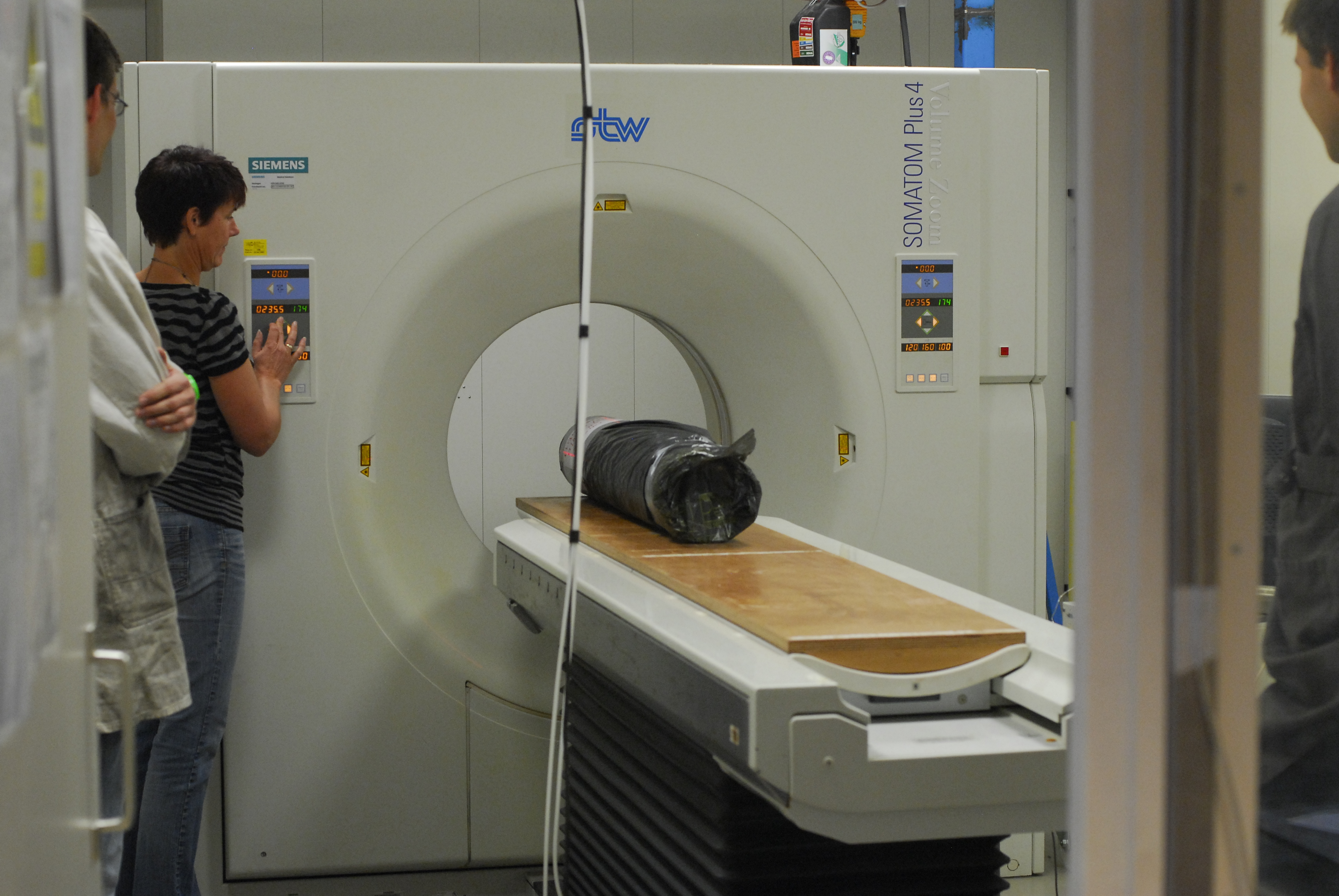
As reported, two solid fuel grains where produced last week. After casting the molten fuel into the liner, it shrinks significantly during cooling. This shrinkage gives rise to a risk of internal porosities and tears in the grains. This porosities will cause uneven regression of the fuel grain and less stable burning. This is clearly not acceptable for a demanding mission like flying halfway into space. Hence rigorous quality checks are required.
The problem with these porosities is however that they are not always detectable by visual inspection. Very often the tear or porosity is encapsulated in a layer of fuel, and hence not observable by looking trough the port. Fortunately, we have regular access to the CT-scanner at the faculty of Civil Engineering. With the CT-scanner we can observe the interior of the grains and determine their quality.
As such, the team went to the CT-scanner today to access the quality of the two grains. As seen below the grains are of a consistent quality and no tears nor porosities are present. Hence both of these grains will be cut to size and be assembled in a combustion chamber.


To illustrate the necessity of scanning, here are some scans of previous produced grains. On these scans, it is clearly visible that significant porosities are present in the fuel that could potentially result in rough combustion. The other grain even shows a large tear. This would expose the liner early on in the burn and might result in a failure of the chamber. The grains shown on these scans have been molten and reused for the production new grains.
With the fuel grains finished and of superb quality, assembly of the motors will commence shortly. Later this week, the complete rocket will be put together for the launch dress rehearsals afterwhich the motors will be packed and shipped to Spain where they will propel Stratos II halfway into space.




